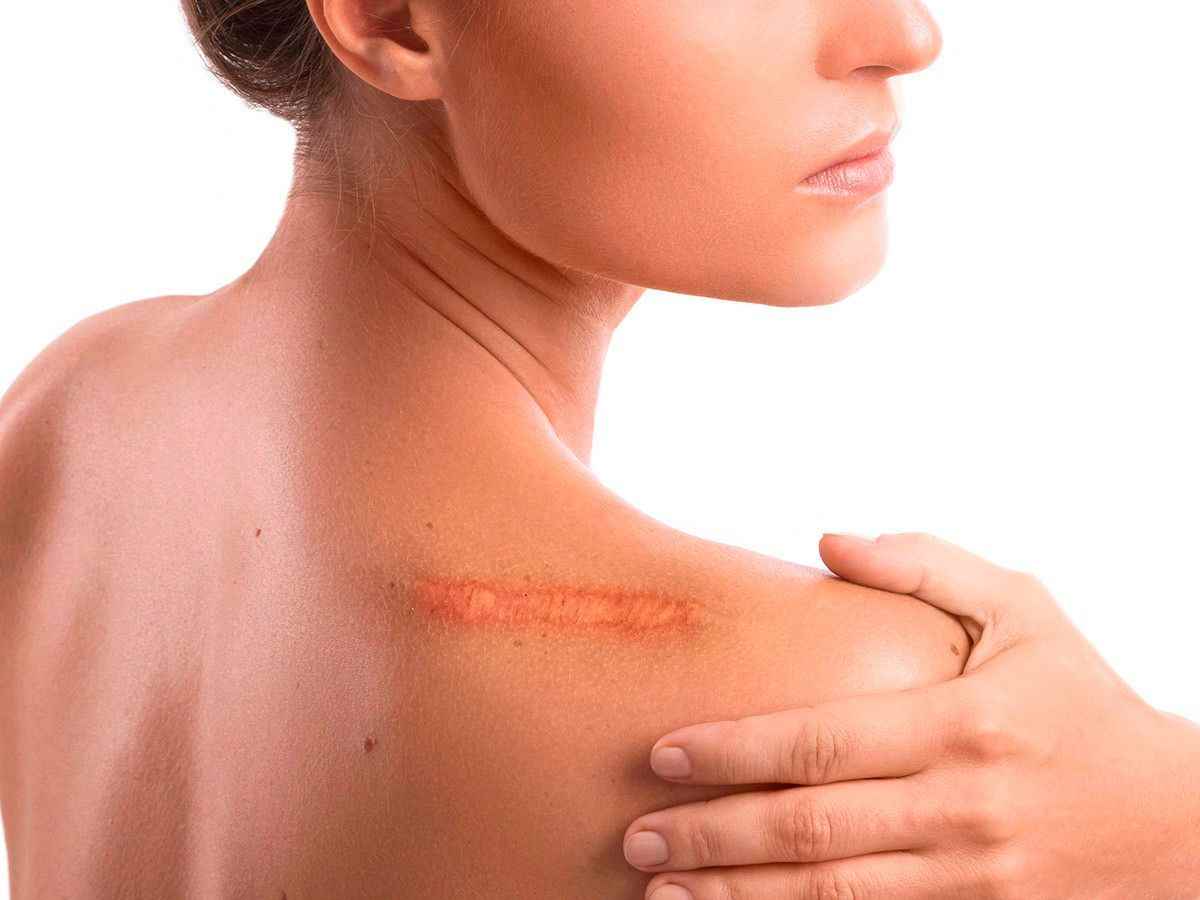Today, there is no process, cream or laser capable of completely erasing scars, recalls the French Society of Reconstructive and Aesthetic Plastic Surgery. Nevertheless, there are a few solutions to reduce them as much as possible!
How does the healing process take place?
Healing is a very long natural process that depends on many factors. It can be spread over 6 to 24 months.
Healing follows different stages:
– Step 1 : formation of a fine scar
– 2nd step : the scar becomes inflammatory. Itching and redness may occur at this stage.
– Step 3 : the scar whitens and softens in its remodeling phase.
To ensure that your wound heals as well as possible during these stages, here are some tips.
To improve the appearance of a scar, it is essential to implement a real prevention strategy during all the healing phases. To do this, here are some tips.
Protect your skin with gels or dressings
To heal properly, the skin needs to be protected against external aggressions. To do this, you can use hydrogels or silicone dressings. Change your dressings daily, cleaning the wound upstream with an antiseptic solution.
Protect your scar from the sun
By exposing your scars to the sun without precaution, you risk accentuating them. During the first weeks of healing, hide your scar by covering it as explained above or with a piece of clothing. If this option is not possible, apply SPF 50 sunscreen to them.
Hydrate the scar
Until complete healing, deeply moisturize your scar with vegetable oil or a suitable cream. In addition to avoiding feelings of tightness, you will provide your skin with all the elements necessary for its proper regeneration. We advise you to use oil from Bio-Oil, known to effectively combat hyperpigmentation and to reduce scars, stretch marks and wrinkles.
Massage your scar
When you apply a cream or oil, make small circular massages. By softening the tissues and stimulating blood circulation, this technique gradually improves the appearance of the scar. These massages are to be performed once the scab has fallen off on its own.
Do not scratch the scab of your scar
As it heals, do not scrape the scab from your scar. In addition to causing bleeding and reopening your wound, removing the scab increases the risk of skin infections.
The laser
Laser treatments make it possible to effectively and durably reduce scars, whether they are caused by acne, due to an operation or following an accident. Several techniques are available to you depending on the nature and appearance of your scar: ablative and non-ablative fractional lasers (when the scar has blisters) or vascular lasers (to reduce redness). Painless, these techniques provide very good results from the end of the first session and will continue to improve over time. After the session, small scabs or some redness may appear. Remember to moisturize your skin well the following weeks.
sanding
If the scar is deep, a specialist can sand your skin under local anesthesia. Two techniques exist today: chemical peeling (exfoliates the superficial layers of the skin in depth using a chemical agent) and dermabrasion (with an abrasive disc). Please note: these techniques are not suitable for all skin types. Indeed, they are not recommended for fragile skin.
The micronedling
This technique, less invasive than peeling, consists of creating micro-perforations on the skin using a small roller made up of about thirty needles. It gently regenerates skin cells and corrects imperfections, without damaging the skin.
Injections of corticosteroids, collagen or hyaluronic aid
To fight tissue inflammation, a dermatologist can inject you with corticosteroids. After a few weeks, he may also offer to fill the holes in the skin with collagen or hyaluronic acid. Absorbable, it is necessary to repeat the injunctions every six months.
Light therapy
Used in addition to laser treatment, LED light helps to better synthesize collagen and elastin. Thus, this process can significantly accelerate healing, reduce scars, bruises, edema and rejuvenate your skin. also to skin cells
Microsurgery is sometimes necessary
When some scars are too large, an operation is sometimes necessary. The goal ? Enclose the tissues with a suture technique to obtain a new, thinner and more discreet scar.
LR
